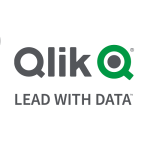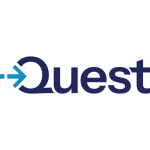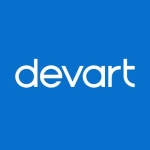What is our primary use case?
The connection layer Informatica uses to get the data from different sources can change. for traditional systems like databases, Oracle, for example, this is something that is managed by a protocol change. But there are two other key areas. One is integrating with legacy systems, mainframes, and for this one, there are some PowerExchange components. Another important one is getting data in real-time using CDC concepts. For these, there is PowerExchange for CDC. So, it's the three main use cases, legacy data integration, real-time integration, and traditional relational systems integration. PowerExchange is not about users. PowerExchange is something that you deploy on one system and it will give the data in real-time and feed it to multiple consumers. So, in the end, you don't need to have multiple users dealing with PowerExchange. It's one engine to deploy on a specific system and its core function would be to continuously feed the information from that system.
What is most valuable?
Mainstream integration and real-time integration are the best features.
What needs improvement?
Real-time has not been enhanced that much over the past few years. There have not been as many features added like they did before. When comparing Informatica PowerExchange to other competing technologies, like Oracle GoldenGate, GoldenGate is selling more features and adding more functions. It's why PowerExchange is still behind GoldenGate for certain functions. The higher availability and fill over capabilities is not that strong, so it needs to be enhanced more. It's not an issue, it's a limitation. Like some new data types that are not supported at all by PowerExchange, some new Oracle table types, like some IUT tables, for example. So, it's missing some features. GoldenGate, for example, is supporting everything in Oracle. It's not a good product in the end. However, Informatica is maybe supporting 80% of the things in Oracle systems. So, it is still missing some functions and some features still need to be supported. For example, if you have data stored like XML content and Oracle table, you cannot get it in real-time using PowerExchange. Supporting all the different data types which are still not supported by the product. Adding more flexibility and what I call administration utilities to manage the product in some graphical way, or some new easy way to use, enhancing the high availability and fill over capabilities of the products.
For how long have I used the solution?
We have been working with Informatica PowerExchange for six years.
What do I think about the stability of the solution?
Stability is good, not bad, but it needs to be improved as well. For example, the higher availability and fill over capabilities is not that strong, so it needs to be enhanced more.
What do I think about the scalability of the solution?
Informatica PowerExchange has what they call vertical scalability. For other integration techniques like integration that is deploying multiple parallel agents, and each agent would be collecting the data in parallel. So, you're doing horizontal scalability, adding more horizontal components, and all of them are running in parallel to process the same data. However, in PowerExchange, you can increase the processing power by adding more CPU or adding more resources to increase the capacity.
How are customer service and technical support?
The support is very good. We always get immediate support.
How was the initial setup?
It's easy to set up, but it's not that flexible to maintain. It does not have easy interfaces to use, to manage the product. Setup was a little stressful, but the operational tasks and the developer tasks need to be improved as well. It took about a month to deploy.
What about the implementation team?
We have our own team who built our facilities. So, we can manage it from our side without difficulty.
What's my experience with pricing, setup cost, and licensing?
With Informatica PowerExchange it's all about capacity. If you are increasing the processing power, you need to buy additional licenses. So, for example, if you have traffic to be integrated and you need some integration layer or power to some CPU cores, or if you want to increase the capacity to handle additional load, you need to buy additional licenses to increase the platform processing power. So, it's about capacity.
What other advice do I have?
You need to get prepared very well before using it. If you just go with the initial default configuration, it will end up with very poor performance. You need to spend some time getting the technical details and the technical workarounds for the product itself. You need some time to master the product. I would rate Informatica PowerExchange at a seven out of ten.
Which deployment model are you using for this solution?
On-premises
Disclosure: My company has a business relationship with this vendor other than being a customer. Partner













